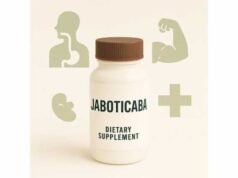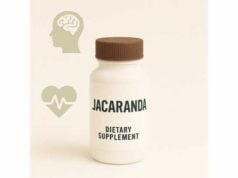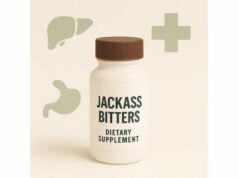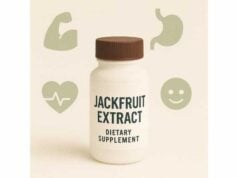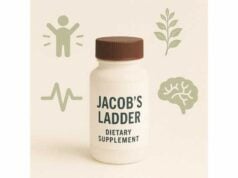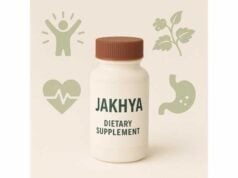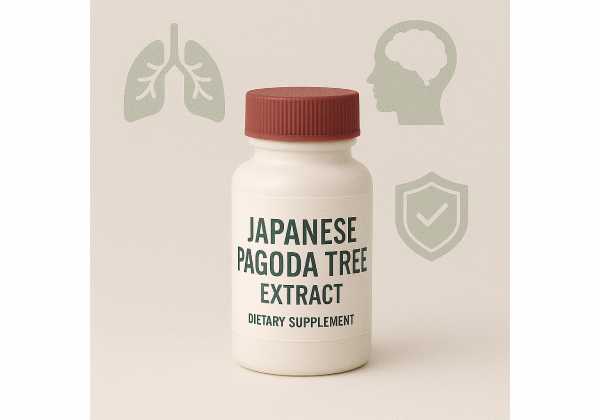
Japanese pagoda tree extract—prepared from the flower or flower buds of Styphnolobium japonicum (syn. Sophora japonica)—is a flavonoid-rich ingredient best known for delivering rutin and related quercetin glycosides. Historically used in East Asian medicine for cooling heat, supporting vascular integrity, and easing bleeding, it now appears in modern supplements aimed at capillary strength, venous tone, and skin or mucosal comfort. Thanks to high rutin content, it sits at the intersection of food and pharmacology: strong antioxidant capacity, evidence for microvascular symptom relief in chronic venous disease (largely via rutoside derivatives), and a generally favorable safety profile when used appropriately. This guide distills the practical details—what to expect, which forms make sense, how to dose, and who should avoid it—while separating heritage from data. You will also find a smart buyer’s checklist and an evidence snapshot so you can run a simple, safe 8–12 week self-trial and decide whether Japanese pagoda tree extract deserves a place in your routine.
Core Points
- Rutin-rich Japanese pagoda tree extract supports capillary resilience and venous comfort; benefits are modest and build over 4–12 weeks.
- Practical adult dosing: 250–500 mg standardized extract (often ≥90–95% rutin) 1–2 times daily, or 1–2 g crude flower/bud powder daily in divided servings.
- Main cautions: gastrointestinal upset and potential interactions with anticoagulants/antiplatelets or certain medications; quality and standardization matter.
- Avoid during pregnancy and breastfeeding, in children, and before surgery, unless a clinician approves.
Table of Contents
- What is Japanese pagoda tree extract and how it works
- Benefits and what to expect
- How to use: forms and preparations
- Dosage: how much per day
- Common mistakes and troubleshooting
- Side effects, interactions, and who should avoid it
- Evidence summary and buyer’s checklist
What is Japanese pagoda tree extract and how it works
Botanical identity and parts used. Japanese pagoda tree, now classified as Styphnolobium japonicum (formerly Sophora japonica), is a deciduous tree whose dried flowers and flower buds are rich sources of rutin (quercetin-3-rutinoside) alongside quercetin, kaempferol, and isorhamnetin glycosides. In commerce you’ll see names like Japanese Sophora flower extract, Flos Sophorae, or Sophora japonica (flower bud) extract. Most dietary supplements standardize the extract to rutin, frequently at ≥90–95% by weight, because rutin is abundant, chemically stable, and well-characterized.
Key constituents and why they matter.
- Rutin (quercetin-3-rutinoside): a glycosylated form of quercetin that exhibits strong antioxidant and vasoprotective actions; it’s the signature marker of this extract.
- Quercetin (aglycone) and quercetin glycosides: support anti-inflammatory signaling and endothelial function, though free quercetin has variable oral bioavailability; glycosides and food matrices can improve absorption.
- Kaempferol and isorhamnetin glycosides: contribute additional antioxidant and microvascular support.
- Trace minerals and phenolics (in crude powders): minor contributors to the overall antioxidant profile.
Mechanisms in plain language.
- Capillary stability: Rutin and related rutosides help tighten leaky capillaries, which can translate to less ankle swelling and less “heavy leg” sensation in venous insufficiency.
- Microcirculation and venous tone: Flavonoids may modulate nitric oxide and inflammatory mediators, supporting smooth venous return and microvascular perfusion—experienced as better calf comfort after long standing or sitting.
- Antioxidant and anti-inflammatory effects: By quenching free radicals and modulating NF-κB/MAPK pathways, the extract can reduce low-grade inflammatory noise that worsens vascular symptoms.
- Mucosal soothing: Traditional uses for bleeding and hemorrhoidal discomfort align with the capillary-stabilizing actions of rutosides; modern formulas often combine flavonoids for this indication.
How it relates to “vitamin P.” Older literature grouped rutin and similar flavonoids under “vitamin P” for permeability; while not a true vitamin, the term reflects their perceived role in vascular integrity. Today we refer to them as venoactive or phlebotonic agents.
What it’s not. Japanese pagoda tree extract is not a blood thinner and not a stimulant. Benefits rely on consistent daily use, not quick hits. If you need immediate pain relief or deep anti-inflammatory effects, this is unlikely to satisfy that goal on its own.
Benefits and what to expect
Chronic venous symptoms (heavy legs, ankle swelling, night cramps). Flavonoid rutosides—including those derived from S. japonicum—have been used for decades to relieve subjective venous symptoms in adults with chronic venous disease. When taken consistently, people often report lighter legs by afternoon, less sock-line edema, and fewer end-of-day throbbing sensations. Improvements tend to appear over 4–8 weeks, with clearer benefits by 12 weeks, especially when combined with compression and movement breaks.
Microvascular comfort in capillary fragility. By improving capillary resistance and reducing hyperpermeability, rutin-standardized extracts can help with easy bruising, minor nosebleeds, or fragile gum bleeding in otherwise healthy adults. Expect modest gains; these extracts support tissue resilience, they do not replace evaluation for underlying clotting or platelet disorders.
Hemorrhoid-related symptoms. Multi-flavonoid combinations that include rutin are frequently used for acute hemorrhoid flares—aiming to reduce bleeding, itching, and swelling. In practical terms, some adults notice shorter flare duration and less bleeding within 1–2 weeks, with ongoing gains across 4–8 weeks of combined diet, fiber, hydration, and bowel-habit care.
Skin and mucosal support. Topicals and oral products appear in formulations for rosacea-prone or reactive skin, driven by the same microvascular rationale. While topical data are sparse, users who respond often describe reduced flushing intensity and calmer skin feel over several weeks of steady use.
Antioxidant support during training or high-exposure periods. Rutin-rich extracts provide polyphenol coverage that complements diet quality. Athletes sometimes use them during high-load blocks to maintain leg comfort, particularly when standing long hours between sessions.
What not to expect. Japanese pagoda tree extract does not cure varicose veins, close venous reflux, or rapidly shrink hemorrhoids. Benefits are incremental and often symptom-focused. For structural venous disease, work with a clinician on compression, exercise, and, when appropriate, procedural options.
Who tends to benefit most.
- Adults with desk- or standing-related leg heaviness who can commit to daily dosing plus movement breaks and hydration.
- Individuals with recurrent hemorrhoid flares who are willing to pair flavonoids with fiber (25–35 g/day), toilet habit changes, and water.
- People with capillary fragility seeking a non-stimulant, food-adjacent approach to support tissue resilience.
Signals your regimen is working.
- Afternoon leg heaviness score falls by ≥2 points (0–10 scale) by week 8–12.
- Ankle circumference (measured at the same point) decreases by 0.5–1.0 cm by evening compared with baseline.
- Hemorrhoid diary shows shorter, less intense flares and reduced bleeding episodes.
How to use: forms and preparations
1) Standardized extract (capsules or tablets)
- What it is: Concentrated flower or flower-bud extract, typically standardized to rutin (often ≥90–95%).
- Why choose it: Consistency. You get a known dose of marker compounds each time, essential for self-trials.
- How to start: Select a product that clearly lists species (Styphnolobium japonicum or Sophora japonica), plant part (flower or flower bud), standardization (e.g., “rutin 95%”), and mg per serving. Begin low and increase only if needed and tolerated.
2) Crude powder (flower/bud) and teas
- What it is: Milled dried flowers or buds, sometimes sold as Flos Sophorae powder or tea-cut.
- Use case: For culinary integration or gentle daily use when you prefer food-like formats.
- How to brew: For tea, add 1–2 g dried material to 250 mL hot water; steep 10–15 minutes, covered. Tea is milder and variable in flavonoid yield; powders in smoothies or yogurt deliver more consistent intake.
3) Combination formulas
- What they are: Rutin combined with hesperidin, diosmin, quercetin, or Centella asiatica and berry extracts.
- Pros/cons: Potential synergy, but harder to attribute effects or identify side effects. If your goal is to understand whether Japanese pagoda tree extract helps you, start with single-ingredient or simple formulas for 8–12 weeks before layering.
4) Topical creams and gels
- What they are: Rutin- or rutoside-containing topicals for localized capillary comfort (e.g., perianal, leg, or facial products).
- Use case: As adjuncts to oral intake, compression, and habit changes. Apply thinly to intact skin per product directions; avoid mucosal contact unless the product is specifically designed for that use.
Practical pairing habits that boost results
- For venous symptoms: Pair with graduated compression (if advised), calf raises and ankle pumps every 30–60 minutes, and an evening leg-elevation routine.
- For hemorrhoids: Add 25–35 g/day fiber, 1.5–2 L/day water, a 1–2 minute toilet time target, and avoid straining.
- For skin reactivity: Identify heat, alcohol, and spicy-food triggers; consider a cool rinse routine after exercise.
Dosage: how much per day
Standardized extracts (adult, typical ranges)
- Starting plan: 250 mg extract once daily with food for 3–4 days.
- Usual range: 250–500 mg, 1–2 times daily (total 250–1,000 mg/day) with meals.
- Rationale: These amounts align with common rutin-standardized products and practical experience from rutoside-class studies used for venous symptoms.
Crude flower/bud powder or tea
- Powder: 1–2 g/day mixed into food or split into 2 servings; increase to 3 g/day if tolerated and needed.
- Tea: 1–2 g per 250 mL hot water; 1–2 cups/day. Tea provides a gentler, less precise intake.
Combination flavonoid formulas
- Follow label directions, but check per-ingredient totals: aim to keep rutin or total rutosides in the 250–1,000 mg/day band unless a clinician advises otherwise. Micronized forms may alter bioavailability; stick with one product to keep the trial clean.
Trial length and checkpoints
- Weeks 2–4: Look for early shifts—lighter legs by late afternoon, shorter hemorrhoid flares, calmer skin.
- Weeks 8–12: Decide to continue, adjust, or stop. These are trend-based benefits; a simple weekly log (0–10 scales for heaviness, swelling, discomfort) brings clarity.
Special situations
- On anticoagulants/antiplatelets: Begin at the lowest end (e.g., 250 mg/day), keep the regimen steady, and discuss any changes with your clinician.
- Sensitive stomach: Take with food; split doses; consider crude powder or tea before moving to higher-potency extracts.
- Athletic blocks or long standing shifts: Time doses with breakfast and lunch; avoid stacking with multiple high-flavonoid products unless supervised.
What not to do
- Don’t exceed label dosing to chase faster results—more often means more GI upset without better outcomes.
- Don’t alternate multiple brands or forms during your first 8–12 weeks; you won’t know what helped.
- Don’t replace medical care for significant venous disease or rectal bleeding; use this extract as an adjunct.
Common mistakes and troubleshooting
“I felt nothing after two weeks.”
- Likely cause: trial too short or inconsistent dosing.
- Fix: extend to 8–12 weeks, keep dose and product constant, and pair with movement or fiber as relevant. Log heaviness, swelling, and discomfort weekly.
“My stomach feels off.”
- Likely cause: taking extracts on an empty stomach or starting at the high end.
- Fix: take with meals, cut the dose in half for a week, or switch to crude powder/tea temporarily.
“My hemorrhoid flares barely changed.”
- Likely cause: missing fundamentals (fiber, hydration, toilet habits).
- Fix: add or tighten 25–35 g/day fiber, water intake, and a 2-minute toilet time limit. Consider a combination flavonoid product if single-ingredient results are modest.
“Labels are confusing—what am I actually taking?”
- Likely cause: unclear standardization or proprietary blends.
- Fix: choose products that state species, part, standardization (e.g., rutin %), and mg per serving. Avoid blends without per-ingredient amounts during your self-trial.
“Can I take this with vitamin C or collagen?”
- Typically yes, and vitamin C foods pair well with flavonoids; but keep add-ons stable during your first 8–12 weeks so you can judge effect.
“I’m already on compression stockings—will this still help?”
- Possibly. Many people combine compression + flavonoids + movement breaks and report additive comfort. Keep expectations modest and track outcomes.
When to stop and seek care
- New or worsening leg swelling, one-sided swelling or pain, sudden chest pain/shortness of breath, black stools, bright red rectal bleeding, or symptoms that don’t improve after 12 weeks of comprehensive care.
Side effects, interactions, and who should avoid it
Common side effects (usually mild)
- Gastrointestinal: nausea, stomach upset, soft stools—often dose-related and improved by taking with food or splitting doses.
- Headache or dizziness: uncommon; consider dose reduction.
- Skin reactions (topicals): localized irritation—use on intact skin only.
Drug and disease interactions to consider
- Anticoagulants/antiplatelets: While rutin is not a direct blood thinner, flavonoid-rich products are often used for vascular effects; keep intake consistent, avoid stacking multiple venoactives, and coordinate with your clinician.
- Antihypertensives and vasodilators: Minor additive effects are possible; monitor if you’re sensitive to blood pressure shifts.
- Chemotherapy/targeted therapies and narrow-therapeutic-window drugs: Quercetin-class flavonoids can interact with transporters and metabolizing enzymes in experimental settings; keep your oncology or specialty team informed before starting any concentrated flavonoid extract.
- Kidney or liver disease: Use only with clinician guidance; stick to lower doses and documented brands.
- Upcoming surgery or procedures: Pause nonessential botanicals 1–2 weeks prior per your care team.
Who should avoid it unless a clinician approves
- Pregnant or breastfeeding individuals.
- Children and adolescents.
- Adults on anticoagulation/antiplatelet therapy or multiple interacting medications without professional oversight.
- People with unexplained rectal bleeding, sudden asymmetrical leg swelling, or ulcerating skin changes (seek medical evaluation first).
Safety checklist
- Choose one standardized product, take it with meals, and track symptoms.
- Keep total daily dose within 250–1,000 mg extract unless advised otherwise.
- Avoid stacking multiple venoactive blends.
- Use topicals only on intact skin and away from mucosa unless designed for that site.
- Stop and seek care for alarming symptoms (e.g., new severe leg pain/swelling, chest pain, black stools, persistent bleeding).
Evidence summary and buyer’s checklist
What the evidence supports today
- Identity and composition: Analyses of Flos Sophorae confirm high rutin content with accompanying quercetin/kaempferol/isorhamnetin glycosides and trace minerals—supporting its use as a consistent flavonoid source.
- Venoactive class effects: Systematic reviews of phlebotonics (venoactive agents) describe modest but meaningful symptom relief in chronic venous disease (less heaviness, cramps, and edema), with a good tolerability profile over weeks to months. Rutosides—natural or semi-synthetic derivatives of rutin—are among the better-studied members of this class.
- Hemorrhoid symptom relief: Rutin-containing multi-flavonoid regimens have shown reduced bleeding and discomfort versus control in clinical settings, positioning flavonoids as adjuncts to fiber, hydration, and behavior change.
- Safety: A comprehensive monograph-level safety review of Japanese Sophora flower/bud supports appropriate use in supplements with low rates of serious adverse events when products are properly identified and manufactured.
Important caveats
- Much of the strongest clinical data in vascular comfort uses rutoside derivatives (e.g., hydroxyethylrutosides, oxerutins), not exclusively raw S. japonicum extract. This still grounds expectations for rutin-standardized extracts, but dose-response and formulation details vary by product.
- Flavonoid bioavailability differs by glycoside type, particle size, and co-ingestion with food; consistency is key for a fair trial.
Buyer’s checklist (what to look for on the label)
- Species and part: “Styphnolobium japonicum (or Sophora japonica) flower or flower bud*.” Avoid leaf/pod products unless you specifically want them.
- Standardization: Clear statement of rutin % or total flavonol glycosides with test method.
- Dose clarity: Exact mg per capsule/tablet, suggested servings/day, and total mg/day at the recommended use.
- Quality controls: Lot number, identity testing, and contaminant screens (heavy metals, pesticides, microbes).
- Simplicity: For an 8–12 week self-trial, pick a single-ingredient or simple formula so you can attribute outcomes and side effects accurately.
- Realistic claims: Be wary of promises to erase varicose veins or stop bleeding overnight—these are adjunctive benefits, not surgical fixes.
How to run a clean 8–12 week self-trial
- Pick one standardized extract (e.g., 250 mg once daily with lunch for 4 days, then 250–500 mg twice daily if needed).
- Track weekly leg heaviness, evening ankle circumference, and hemorrhoid symptoms (if relevant) on 0–10 scales.
- Keep compression, activity, fiber, hydration, and sleep steady.
- At week 8–12, decide objectively—continue, adjust, or stop.
References
- Combined analysis of inorganic elements and flavonoid profiles in Flos Sophorae by joint application of ICP–MS and UPLC–Q–Orbitrap–MS (2023)
- Phlebotonics for venous insufficiency (2020) (Systematic Review)
- A randomized, double-blind, placebo-controlled trial of a Sophora flower formula in symptomatic haemorrhoids (2012) (RCT)
- United States Pharmacopeia comprehensive safety review of Styphnolobium japonicum flower and flower bud (2022) (Safety Review)
- Genus Sophora: a comprehensive review on secondary metabolites, biological activities, and toxicities (2021)
Disclaimer
This guide is educational and does not replace professional medical advice, diagnosis, or treatment. Always consult a qualified clinician before starting, stopping, or combining Japanese pagoda tree extract with any medication—especially anticoagulants, antiplatelets, antihypertensives, or oncology therapies. Do not use during pregnancy or breastfeeding, in children, or in place of evaluation for significant symptoms (e.g., new leg swelling, rectal bleeding). If you experience severe abdominal pain, black stools, unusual bruising, shortness of breath, or fainting, stop use and seek medical care.
If this article was helpful, please consider sharing it on Facebook, X (formerly Twitter), or your preferred platform, and follow us for more evidence-based wellness content. Your support helps us continue producing high-quality guides.

